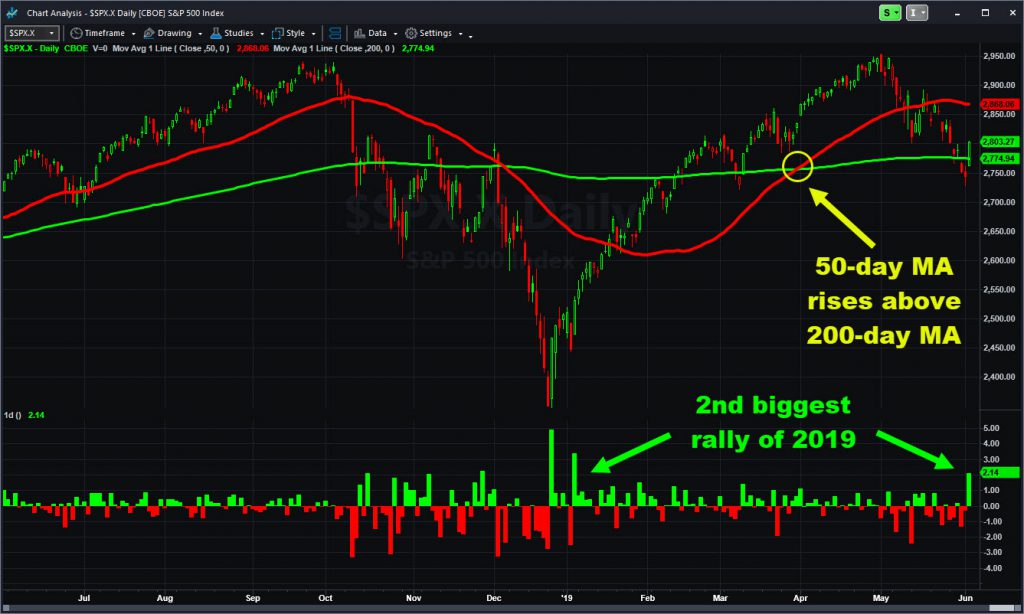Stocks just had their second-biggest rally of the year, partially because of the Federal Reserve. It’s worth recapping what happened.
The story actually began on Monday, when James Bullard of the St. Louis Fed said a rate cut “may be warranted soon.” Then yesterday, Chairman Jerome Powell said “we will act as appropriate to sustain the expansion.”
A little later in the day, Vice Chair Richard Clarida added in an interview on CNBC that “we’re going to put in place appropriate policies to achieve” economic growth.

All three U.S. bankers are voting members of the Federal Open Market Committee, which sets interest rates. Their comments follow similar actions around the world:
- June 4: The Reserve Bank of Australia cut rates for the first time in almost three years.
- June 4: Inflation in the Euro Zone came in far below expectations just two days before a big European Central Bank meeting.
- May 17: Haruhiko Kuroda said the Bank of Japan would keep “extremely low” rates through at least the spring of 2020.
- Last month, the Philippines also cut interest rates unexpectedly and banks’ reserve requirements. Malaysia took similar steps.
Growth Continues Despite Tariffs
Clarida of the Fed said something else yesterday: “We’re confident so far saying so far the tariffs in place have had a small impact — if at all — on growth.”
That matched a European report of unemployment unexpectedly falling to its lowest level in over a year. It also followed strong U.S. gross domestic last week.
This kind of low inflation and steady growth seem to represent a continuation of so-called “Goldilocks” conditions. The economy isn’t too hot, or too cold. It’s just right to let interest rates stay low. That, in turn, can make investors comfortable buying equities.
More information keeps coming this week. ADP’s private-sector payrolls report, Institute for Supply Management’s service index and the Fed’s Beige Book survey of economic conditions are due today. An ECB meeting and U.S. jobless claims come tomorrow, followed by non-farm payrolls on Friday.
In conclusion, markets fell sharply in May as the market worried about trade wars. But it’s a new month and now attention seems to be shifting to a story that investors like more: a dovish Fed.



























